FUTURE OF WEARABLES
Fashion today is the number one sector that represents the mass consumerism of last century. Result of this endless consumption has both environmental and social negative impacts. In this project, I intend to question our expectations from clothing/fashion today and try to find better connections between our wearables and us.
During the process of the project I made several analysis and experiences. First thing was trying to exhibit my own clothes and understand how many of them were durable and are in my closet because of their functions. There were not so many, which means that the intention of buying a garment for me was controlled by “trends” or current “fashion brands”.
EXPERIENCE #1
One of the experiences of project was “sensing the city” that you can see at the video below, during 3 days I carried and Arduino Board with sensors in regard with ‘humidity’, ‘air pollution’, ‘temperature’, ‘noise’ with me in order to see how environmental data in the city is changable. The outputs were really interesting because in every moment we move we are exposed to the change of pollution in the city for instance. What if we could understand and respond simultaneously the unvisible environmental conditions by help of our clothing. What if our clothes are small responsive gadgets that let us know what is going on around.
Here in the end of video we see the diagrams of data change during the movement in the city.
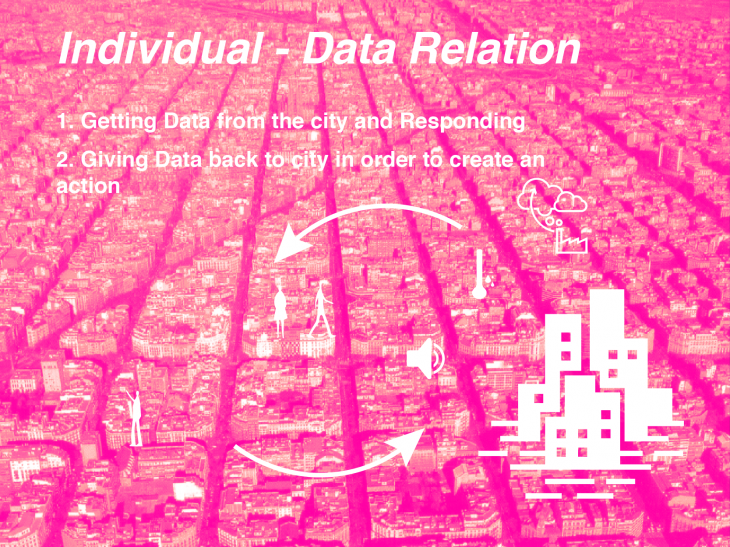
Current technologies enable us to sense our environment and digitally visualize the reality that we can not observe. However the big question here is how is the current relation between individuals and data. How we can be a part of this system instead of just being used in big data market. Here in the graph we see two possible method of integrating data technologies with human participation;
#1 Getting environmental and social data from the city and responding it,
#2 Giving this data back to city in order to create an action
POTENTIAL DYNAMIC ENVIRONMENTAL DATA NETWORK
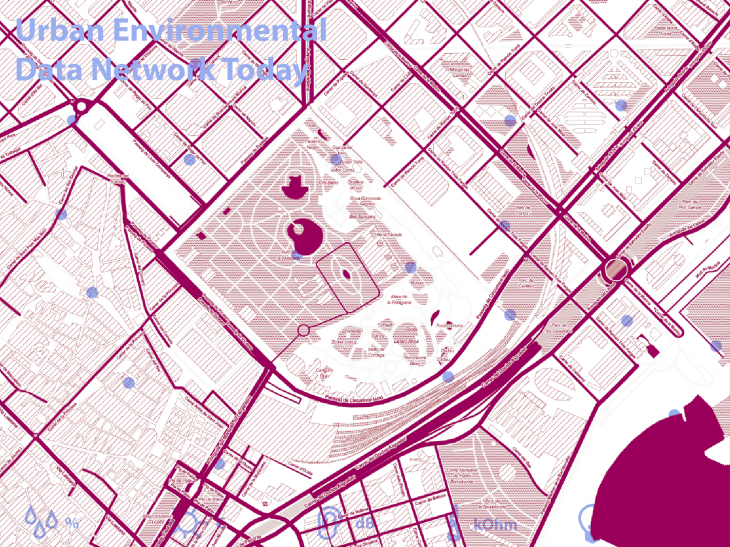
Today open environmental data network examples represent static data that has been collected through static sensors and stored in a cloud in order to inform citizens about their living environment. However there is another possible dynamic application of sensor technologies that can create a more human eye and realistic data about our living environment because we are never static during the day and always are exposed to different environmental conditions therefore it is more advantageous for us to get information about all kind of different environments. I imagine clothing as a strong starting point for that. Our clothes can turn into responsive gadgets that inform us simultaneously but also collect this dynamic data in a network in order to share with others.
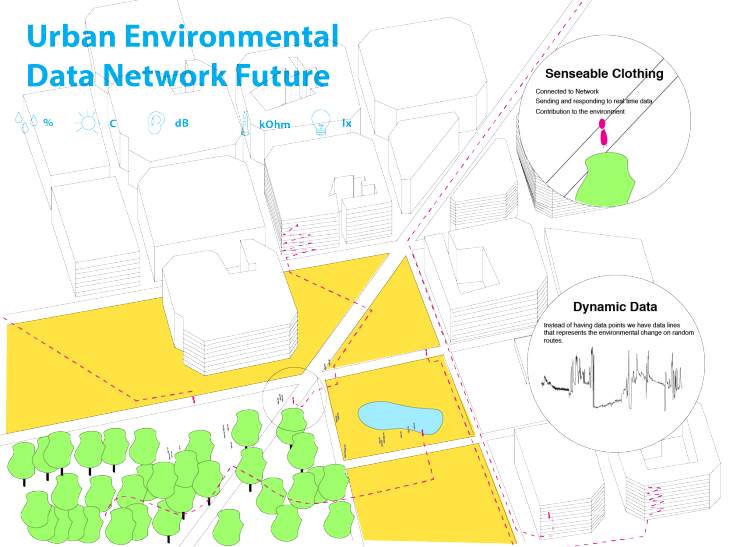
PROPOSAL
In the proposal, sensors and data is being used as part of clothing in order to sense and respond simultaneously, sending this information to a network and meanwhile having small interventions in order to make contributions to our own living environment. Carbon Monoxide and Nitrogen Dioxide sensors are used in order to sense the pollution around us, and when there is polllution over the limit, our clothing let us know about it, meanwhile, by using very simple chemical elements called “Nano Titanium Dioxide Filter” which basically is a powder to wash our clothing can help to clean the air around us. 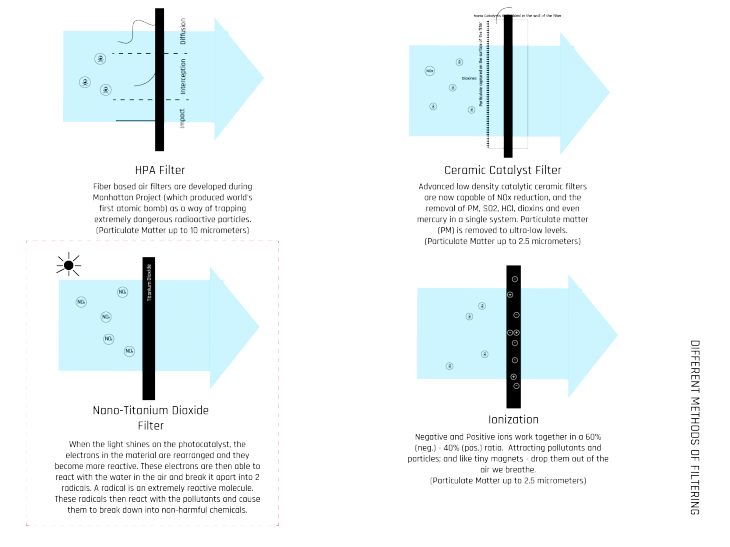
EXPERIENCE #2
The other experience was related to bringing our old clothings back to life instead of throwing them away by simply hacking them and turning them into more durable and responsive gadgets that help us be more aware about our physical environment.
For this experience first I needed to find a jacket that was about to be thrown away, then I analyzed different layers of the jacket in order to rethink and redesign it in a more responsive way. For a responsive clothes I needed some extra parts such as parts for sensing and responding. After making the sketches I prepared the design for digital fabrication. Meanwhile I started to try electronics part, with the Carbon Monoxide sensor embedded in arduino board ( Code Here ) I was sensing the amount of pollution around and I was using LEDs embedded in clothing to inform me about the situation simultaneously.
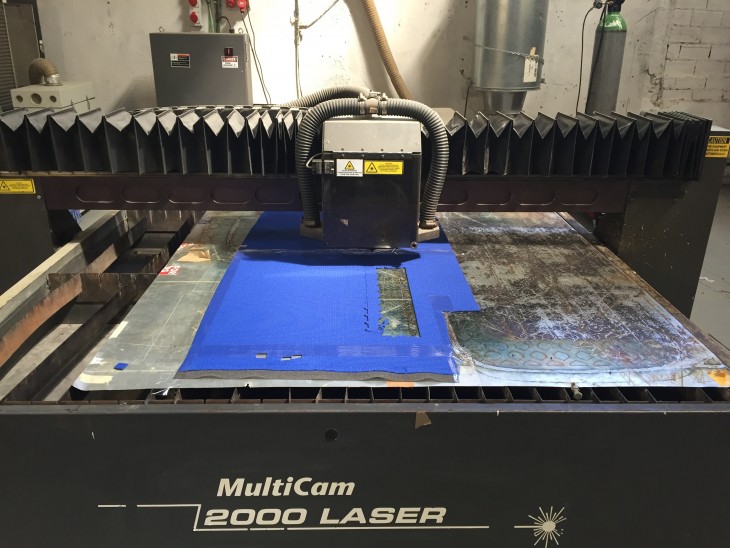
Laser Cutting the additional parts for electronics on the jacket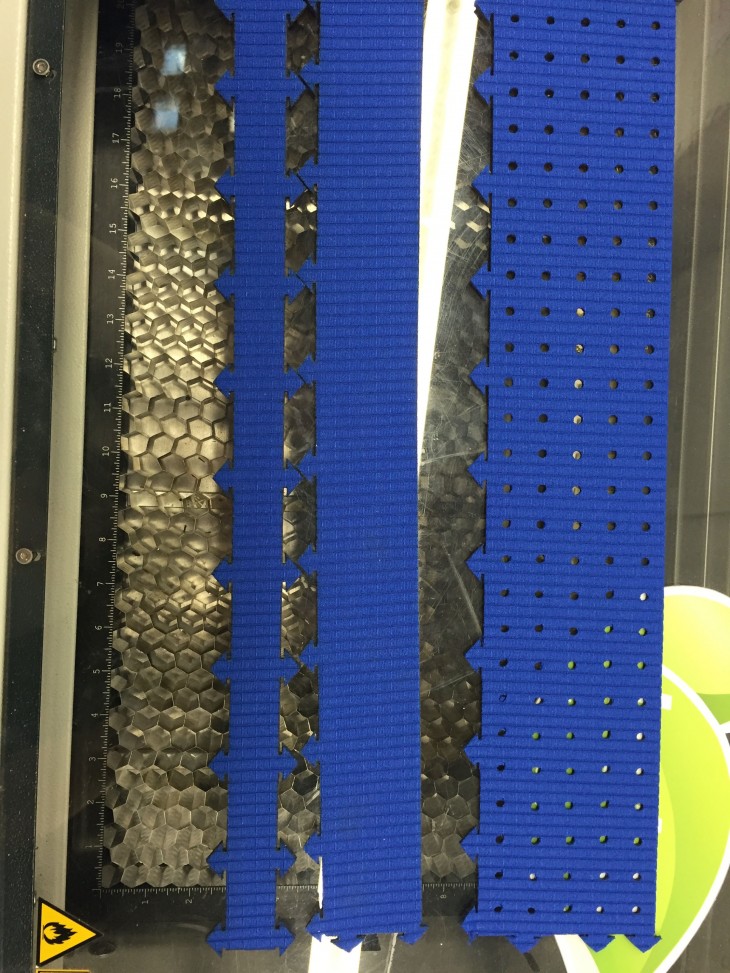
Hack your Garment is a project of IaaC, Institute for Advanced Architecture of Catalonia developed at Master in City and Technology in 2016 by:
Student: Ilkim Er
Faculty: Tomás Diez – Mathilde Marengo